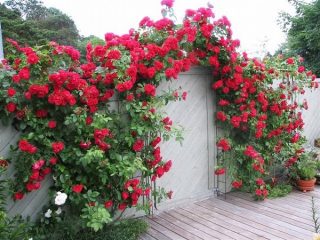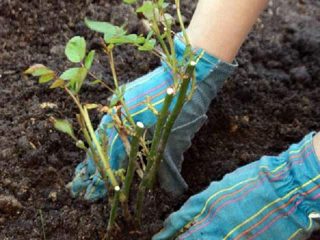Content
The nomadic fern is a garden, undemanding crop intended for cultivation in a personal plot. There are many varieties that have their positive and negative sides. The plant is unpretentious and quickly grows green mass when grown in the shade of trees, next to buildings and on the north side of the site.
General description of the species
The nomadic fern is a perennial, ancient plant from the Aspleniaceae family. It is unpretentious, grows and develops well in shady and moist areas. The nomadic fern is a well-known crop; gardeners love it for its beautiful foliage, ease of cultivation and versatility in use. Before purchasing a nomadic fern, you need to familiarize yourself with the characteristics, view photos and choose the variety you like.
- The nomadic fern has a branched root system, which is located superficially. Straight or spreading, small roots are painted black.
- The stem is low, dense, densely leafy.
- The lanceolate leaves have a pinnate, triangular structure. The leaf plate is attached to the shoot using a small petiole covered with a thin shell.The leaf blade is large, reaching a length of up to half a meter. On the outer side of the leaf in the fall, sori are formed, in which spores mature, thanks to which the plant reproduces.
- Leaves appear in spring and are the decoration of the plant. Depending on the variety, they have a variety of colors: dark emerald, variegated, red, gray and ashy.
- The nomadic fern is easy to grow, as it develops well in polluted areas, is resistant to low temperatures and grows well in moist soil.
- Kochedyzhnik is considered a long-liver; it can grow in one place for about 15 years.
Varieties of nomad
Under natural conditions, there are about 200 varieties of nomadic fern. But about 10-15 varieties are grown in Russia. The most popular are:
- Female - one of the most famous species that can be found in garden plots. The plant got its name from its delightful, lacy foliage. Under natural conditions, female fern grows in North America and central Europe. The female nomadic fern grows up to 120 cm in height. The leaves, which grow in early spring, reach 100 cm, have oval, pinnately dissected, light olive foliage, collected in a dense bunch. The dense and powerful root system has medicinal properties, so they are often used in folk medicine. Thanks to its beautiful foliage, female kochedyzhnik is used for landscaping summer cottages and city parks.
- Nipponeseis a popular variety that is loved to be grown in China, Japan, Vietnam and Korea. Nippon kochedynik is considered the most beautiful species, thanks to its bright and beautiful foliage.The leaf blade of the fern is painted in a silver-ash color with reddish-purple streaks. The culture prefers partial shade and moderately moist soil. Due to its high frost resistance, Nippon fern can be grown throughout Russia.
- Gorodchaty - a perennial crop, up to half a meter high. Prefers to grow near bodies of water, in damp, swampy forests. The fern forms a long, cord-like, branched rhizome on which leaves grow in a single or group arrangement. The leaf blade is oblong, pinnately dissected, light emerald in color. The variety reproduces by spores and division of the bush. When growing on a personal plot, it is necessary to select a wetland in partial shade.
- City-serrated, distributed in the Far East and Primorye. It can be found along the banks of rivers, lakes and in damp forests. The plant is medium-sized, reaches a height of 1 m. The light olive leaf plate reaches 70 cm, has a beautiful, openwork appearance. The variety is frost-resistant, grows well and develops in the shade under the canopy of trees. When growing a fern in the sun, growth slows down, and the leaf blade loses its decorative effect.
- Needle – a low-growing variety, reaching a height of up to half a meter. When growing on a personal plot, it is necessary to remember that the plant grows quickly, forming extensive thickets. The openwork leaf plate is diamond-shaped, pinnately divided, located vertically and colored olive.
- Chinese or red-petioled – a tall plant, reaches up to 120 cm. It forms beautiful, dense thickets due to self-seeding. Leaves collected in a bunch have a purplish tint.The leaf plate is attached to the shoot using dark red small cuttings. The variety is winter-hardy and grows well in moist soil. Chinese fern is suitable for creating decorative compositions in the shade of trees and looks beautiful when decorating flower beds.
Varieties of fern Nippon nomad
Gardeners use Nippon kochedyzhnik to decorate their summer cottage. The species gained popularity for its beautiful, highly decorative foliage with a metallic sheen and bright crimson tones on the stem. The most famous varieties:
- Pictum – an ornamental variety with bright and effective foliage. The leaf blade has a bluish-emerald tint with pink or ashy veins. The plant shows its decorative properties in clear, sunny weather, when grown in light partial shade. The soil should be loose, fertile, well-moistened with high acidity. The variety is universal; it is planted in flower beds, next to cereals and ornamental shrubs.
- Ursulas Red - a decorative variety of kochedyzhnik, which will decorate a personal plot. In the spring, the nomadic fern Ursulas Red produces young shoots that are light olive in color with a red tint near the center and yellow-silver edges. As the leaf blade grows, it becomes snow-white-silver in color, and the center turns red-green-purple. Thanks to its fantastic colors and decorative appearance, which lasts from spring until the first frost, Ursulas Red is widely used in landscape design.
- Burgundy Leys - a large and decorative variety that captivates with its unusual foliage.In spring, the plant produces burgundy-red foliage, over time it lightens and acquires a silvery color; at the end of the growing season, the leaf blade acquires a greenish tint, leaving a central vein of bright red color. The Nippon Burgundy Leis fern is a long-living fern; it can grow in one place for up to 15 years. The plant is unpretentious, it can be planted in the shade, but in sunny partial shade the fern acquires a rich, bright foliage color.
- Nomadic fern Red Beauty – low-growing species, height reaches up to half a meter. Red Beauty is famous for its decorative foliage color. In the first half of the growing season, it is colored pink-violet; as it grows, the color changes to violet-ashy; closer to autumn, the leaf becomes silver in color with a pronounced purple stem. Nippon Red Beauty nomadic fern is frost-resistant and unpretentious. Can grow in both sun and shade. But when grown in a well-lit place, the foliage acquires a bright, rich color that decorates the garden plot from spring until the first frost.
Varieties of female nomad
Female kochedyzhnik is a medium-sized, unpretentious crop that reaches a height of 1 m. In the spring, emerald shoots of an original shape grow from a powerful, short rhizome. As they open, they turn into large, lacy, pinnately compound leaves. The variety is very popular among gardeners. It is used for single and group plantings, for decorating flower beds and next to ornamental shrubs.
The most popular varieties:
- Lady-in-Red - the tallest representative of the class, the plant height reaches 120 cm. The soft green leaves are collected in a bunch, have a double and triple pinnate shape with dissected feathers.This gives the foliage an openwork, airy look. This species belongs to the forest species, therefore it grows and develops well on fertile, light, moist soil.
- Victoria - a low type that is suitable for decorating small garden plots. Large, delicate olive leaves, pinnately divided in shape, are attached to the stem with the help of small lemon or reddish petioles. The foliage is directed in different directions, due to this, regular chains are formed on both sides of the leaf axis. Victoria is unpretentious and grows well in the shade on moist soil.
Red-petiolate nomad
The red-petioled or Chinese nomad is common in the broad-leaved forests of the Far East. The plant forms a low bush that reaches 70-100 cm. Double and triple pinnate soft green leaves are attached to the stem with red petioles. The leaves grow from a thick, spreading rhizome, forming an openwork bunch.
Chinese nomadic grass is undemanding to soil and grows well in forest and garden soil. The variety does not tolerate waterlogging and drought well, it is resistant to frost, and shading does not interfere with growth and development. The plant is long-lived; it can grow in one place for up to 15 years.
Application in landscape design
Kochedyzhnik is widely used in landscape design, as the openwork foliage adds chic and splendor to the garden plot. They are planted in shady places, next to a pond, under the crowns of tall ornamental shrubs. Kochedyzhnik looks harmonious when planted in flower beds, among other types of fern, which will contrast in color and size.
Conclusion
The nomadic fern is a godsend for gardeners, as it is unpretentious and suitable for growing in small areas.Thanks to its bright, openwork foliage, the fern looks great among bright perennials, near ornamental shrubs, in single and group plantings.





















